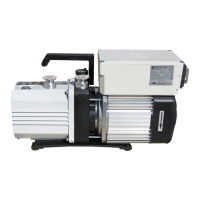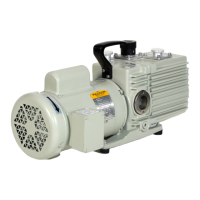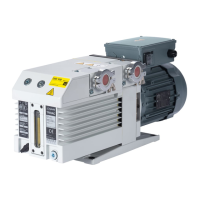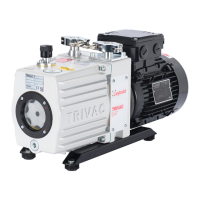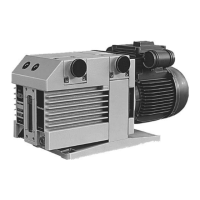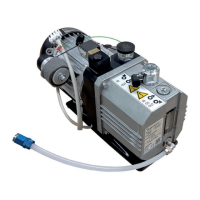7.3.2 Pumping of condensable gases and vapours
1. Gas ballast valve1. Gas ballast valve
The pump is equipped with a three-position manual gas ballast valve which
operates with air.
The gas ballast is operated manually by turning the rubber knob on the gas
ballast head. There are 3 positions:
▪ 0 - closed (to achieve best ultimate pr
essure)
▪ I - standard ow for standard vapour load
▪ II - high ow for high vapour load (hydro mode)
The gas ballast
ow is valid for a pump operating at ultimate pressure (inlet
closed) and for a gas ballast gas supply of 1 bar (absolute). Above
1 bar (absolute) the pump may get damaged.
To operate the gas ballast with inert gas, remove the standard gas ballast
and install the 'permanent gas ballast kits' with DN 16 KF connection
available as an accessory. Refer to Accessories on page 58. For remote
control, t an EM gas ballast valve kit (available as an accessory, refer to
Accessories on page 58). The EM gas ballast valve must be supplied with
24 V d.c.
The pump is slightly louder if the gas ballast valve is open. With the gas
ballast valve open (position I or II) and when the temperature is stabilised,
the pump can pump pure water vapour up to the water vapour tolerance
specied in the technical data. If the vapour pressure increases above the
permissible level, the water vapour will condense in the oil of the pump.
When pumping vapours make sure that the gas ballast valve is open and
that the pump has been warmed up for approximately 30 minutes with the
intake line closed.
Note:
Vapour phases may only be pumped up to the permissible limit after the
pump has attained its operating temperature.
300956027_002_A0 - 03/2022 - © Leybold
36
Operation
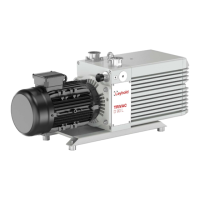
